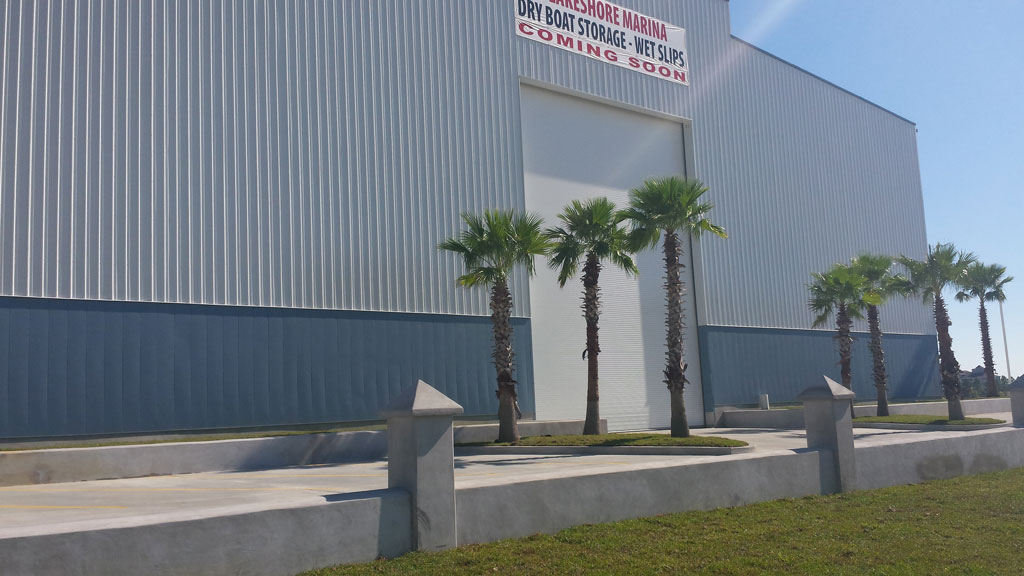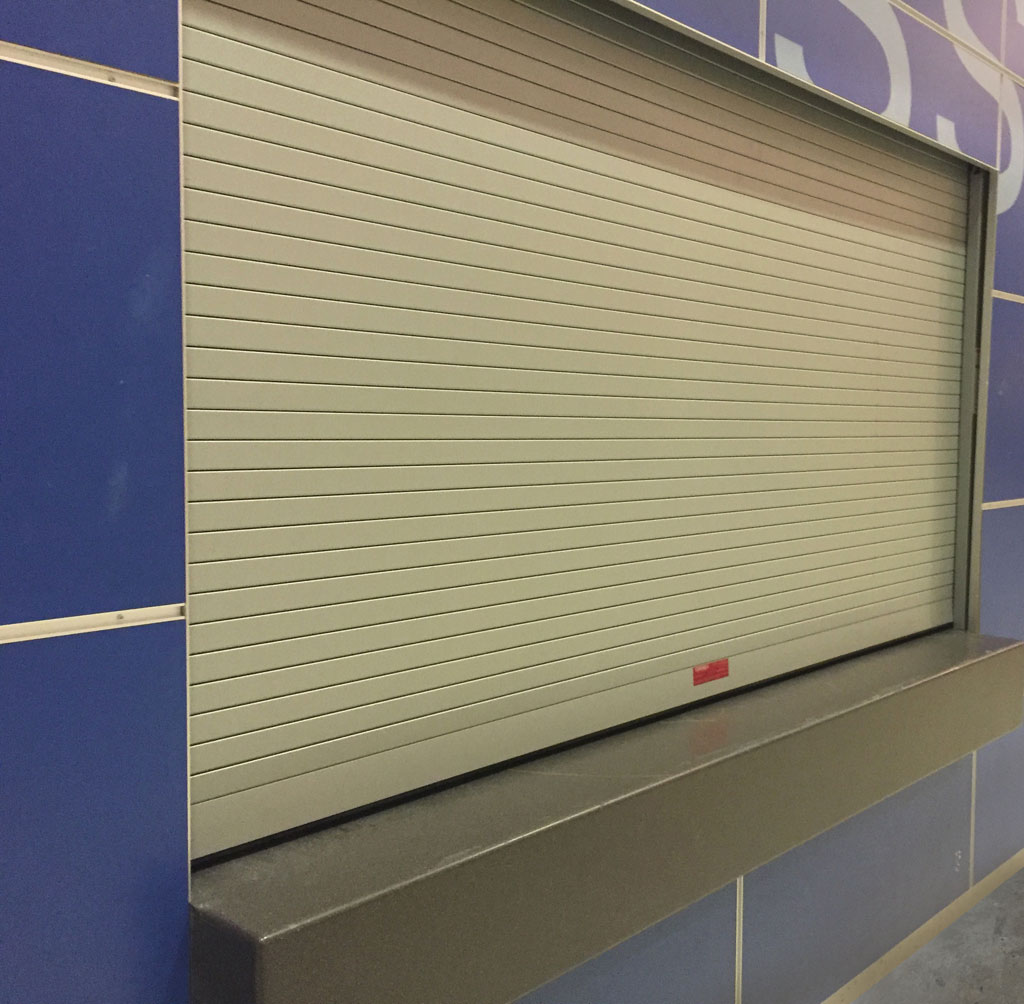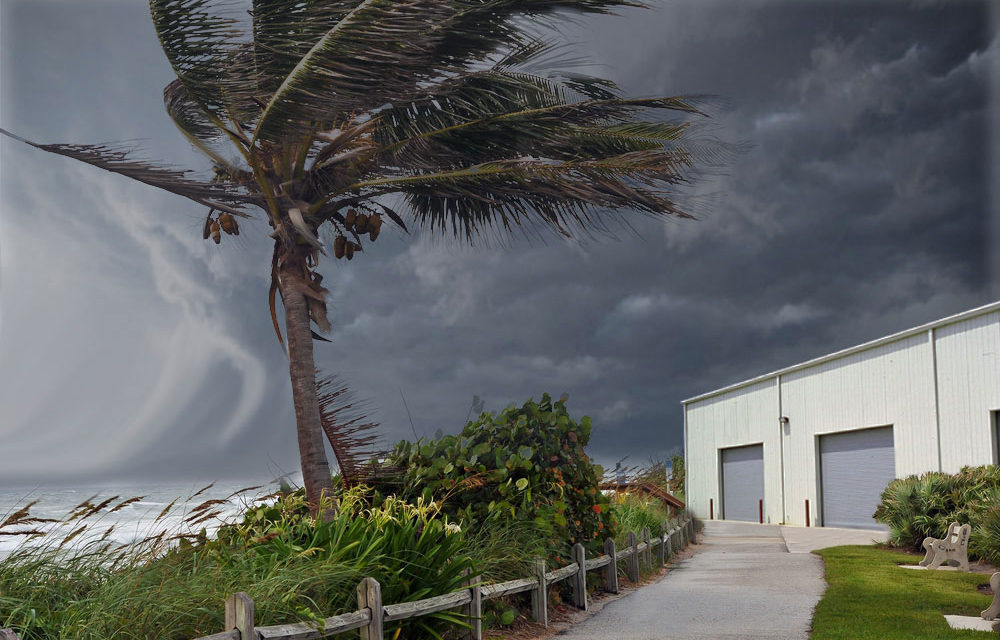In advance of hurricane season, there’s often a lot of questions about hurricane proof doors and how to protect buildings from damage. It’s no surprise that rolling doors are often areas of great concern, as any opening or hole in the building is a natural pressure point that must be able to withstand great wind forces in a hurricane. That’s where the term “wind load” comes in, and it comes in two flavors – “Design” and “Test.” Let’s take a closer look.
When hurricane garage doors are closed, all loads are transferred to the overhead door guides (the channels at the sides of the door) and wall angles (how the guides are attached to the wall). One must worry about two kinds of loads here – “dead” and “live”. Dead load is the total rolling door hang weight and is constant. Live load is wind pressure forces and is not constant.
While generally, overhead rolling doors are supported by a guide assembly attached to the jamb construction and no additional header supports are required to keep the coiling door up, there are some areas of critical support in dead vs. live load situations. The critical wall fasteners in a dead load are above the rolling door opening (think of a clothesline with clothes pins holding a sheet at the top – that’s your top fasteners). Live load’s most critical wall fasteners are within the opening height (think of a chain link fence – the areas where the chain link meet the posts are the side fasteners).

Think of live forces as the gusts of wind during a hurricane. It’s not hard to see that the live load forces can greatly exceed the dead load force. Wind load is the amount of live load that hurricane garage doors can handle.
For example, a 20’ by 20’ non-insulated 22-gauge chain operated hurricane garage door weights about 1,600 pounds. A 20 psf wind load adds 4,800 pounds of load on the building jambs – that’s three times the roll up door weight!
Wind Load vs. Wind Speed
So, knowing that high wind speeds are seriously damaging in a hurricane, you might be tempted to simply specify maximum wind speed to make sure your hurricane proof doors are up to the task. But that’s not enough. There are ten factors that play a role in determining Design Wind Load – a much more accurate measure of how a commercial garage door will be able to withstand a hurricane:
• Wind Speed
• Mean Roof Height
• Roof Slope
• Surrounding Topography
• Exposure Category
• Directionality Factor
• Door Area
• Zone
• Positive or Negative Pressure
• Internal Building Pressure

Clearly, the wind speed and the size of the overhead door are very important factors. But changing just one of the other factors can radically change the required Design Wind Load for your hurricane garage door. These ten wind load door factors give you the required pounds per square foot (psf) of a garage door – a much more accurate measure of how a rolling door will perform in windy situations.
It’s important to note that in this instance, were we’re talking about Design Wind Load, which is utilized in areas where wind conditions cause structural concern.
Design Wind Load vs. Test Wind Load
Test Wind Load – also known as Ultimate Wind Load is defined as the engineered limit of a rolling door’s capacity. Building codes typically require a proof of performance for a Test Wind Load that is 1.5 times the specified Design Wind Load. For example, a 30 psf Design Wind Load implies a 45 psf Test Wind Load for your rolling hurricane garage doors.

Windload weather counter
Hurricane Garage Door Standard
It’s normal for overhead coiling doors to be able to resist up to a 20 psf wind load as standard. If a commercial garage door needs a higher psf rating, additional wind load construction must be ordered with the rolling door. Wind load construction includes:
• Windlocks – a metal “lip” placed on each side of the curtain, these are the things that keep the curtain of the hurricane garage door in the guides
• Additional, heavier or stronger windlock fasteners
• Heavier or deeper guide angle assemblies with heavier, stronger and closer bolt spacing
• Full height “windlock bars” inside each guide assembly that the windlock engages to retain the curtain in the guides
One thing that is not required for a Hurricane Garage Door is heavier gauge. A common misconception is that wind load capacity will increase if heavier gauge door slats are specified. A heavier door curtain gauge may cause the windlocks to be less effective, because it increases the dead load of the door; thereby exponentially increasing the live load of the overhead door – all of which puts the door at a higher risk of blowing out.
About the author
Heather Bender, Strategic Marketing Manager, CornellCookson
Heather Bender brings her decade of marketing and product management experience to her current role of Strategic Marketing Manager at CornellCookson. In this position, she is responsible for company growth through the management of a diverse portfolio of new products in the research and development stages. She was previously employed by InterMetro Industries in positions of increasing responsibility, most recently as a Product Manager. In that role, she managed multi-segment product lines servicing the Foodservice, Healthcare and Commercial industries. Heather graduated with honors from Misericordia University with a Bachelor’s degree in Marketing and obtained her Project Management certification from The Pennsylvania State University.
For more information on hurricane garage doors visit CornellCookson.com.





